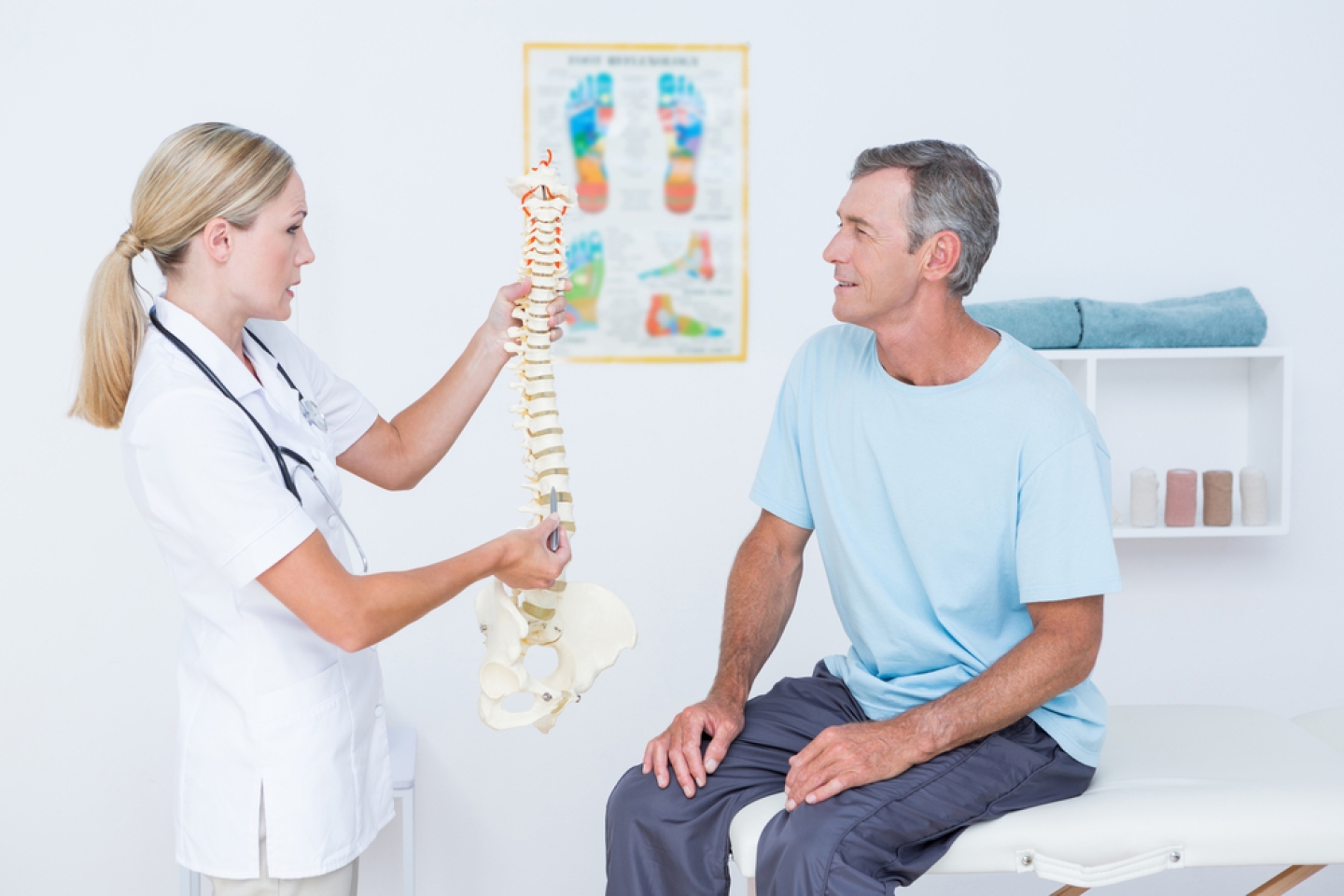
There are many possible causes of back pain, and these only become more prevalent as we age. Among the most common is a condition called spinal stenosis: the progressive narrowing of the spinal canal.
The spinal canal runs from the neck all the way down to the pelvis, and stenosis may occur at any location, says Dr. Daniel Pak, Director of Practice Innovations in the Pain Medicine Division and Assistant Professor of Clinical Anesthesiology at Weill Cornell Medicine, but it is most commonly seen in the lumbar spine.
Spinal stenosis affects roughly 11 percent of adults in the U.S. Most of them won’t require treatment, he says, but it’s the leading diagnosis for patients over 65 undergoing spine surgery.
However, at Och Spine at NewYork-Presbyterian at the Weill Cornell Medicine Center for Comprehensive Spine Care, there are many innovative, non-surgical ways to treat and alleviate spinal stenosis symptoms. Keep reading to familiarize yourself with all the options, from medications to physical therapy (PT), injections and a wealth of procedures that can be tailored to the specifics of your problem.
Avoiding opioids, especially for long-term use, has become a priority for health providers, and understandably so. Many patients become dependent on these medications, with diminishing returns over time. As well, says Dr. Pak, opioids come with side effects, including fogginess, constipation and respiratory depression, also known as hypoventilation—a serious condition that occurs when your breathing becomes too slow or shallow.
Fortunately, he says, “there are plenty of alternatives. In fact, the field of pain management is growing by leaps and bounds, so there’s every reason to be optimistic that we’ll provide an option suited to the source and severity of your pain.”
Some non-opioid medications include:
Dr. Pak is quick to point out that PT is not the same as going to the gym. It takes time, plus patients need to be committed to the process.
With time and commitment, PT will:
Another option is a series of corticosteroid injections into the epidural space in your spine. These are useful both diagnostically and therapeutically, Dr. Pak says.
Steroid injections are the most conservative intervention that can be offered. They’re low-risk, involve no recovery time and are administered with a local anesthetic.
However, they don’t treat the underlying cause of your pain, and their duration of pain relief can vary.
In recent years, the field of pain management has benefited from major advances, and nowhere is that progress more evident than in the area of non-surgical procedures to alleviate the symptoms of spinal stenosis.
Elective and minimally invasive, these procedures are designed to alleviate pain—and even, in some cases, its root cause—without general anesthesia or prolonged recovery.
“The procedures we offer may not eliminate all of a patient’s pain, but they’ll improve both pain and function,” he says. “In many cases, they’ll allow patients to remain independent—especially older patients.”
Dr. Pak proceeds to summarize these procedures below:
Let’s call this one “decompression” for short. It’s usually performed without general anesthesia, and it involves 1 or 2 very small incisions to the affected area, guided by X-ray.
As a minimally invasive outpatient procedure, decompression involves equally minimal recovery time. It doesn’t require an implant. And it’s covered by Medicare and many commercial insurance plans. It eases the compression seen in spinal stenosis, reducing pressure on the nerves and the pain caused by that pressure.
An interspinous spacer is an implantable device that prevents extension and narrowing of the spinal canal, which irritate the nerves in particular areas of the spine. Like decompression, ISS is an outpatient procedure that doesn’t typically require general anesthesia. It, too, is guided by X-ray and involves 1 or 2 small incisions.
However, there are certain limitations. “Patients with osteoporosis or those with morbid obesity are not candidates for ISS,” says Dr. Pak, “and we can’t use it at all locations in the lumbar spine.”
“We sometimes refer patients to our integrative health colleagues for treatments such as acupuncture, massage therapy, mindfulness coaching, meditation instruction and cognitive-behavioral therapy,” Dr. Pak says.
There are many non-surgical ways to treat spinal stenosis—and other types of back pain—such as:
The most important first step is to have a conversation with a pain management specialist regarding your lifestyle and level of pain, along with what you’ve already tried that failed to produce the desired results. Together with your provider, you’ll decide on the treatment plan that best suits your needs and promises the best quality of life.
Make an appointment for a consultation with a pain management specialist at Weill Cornell Medicine.